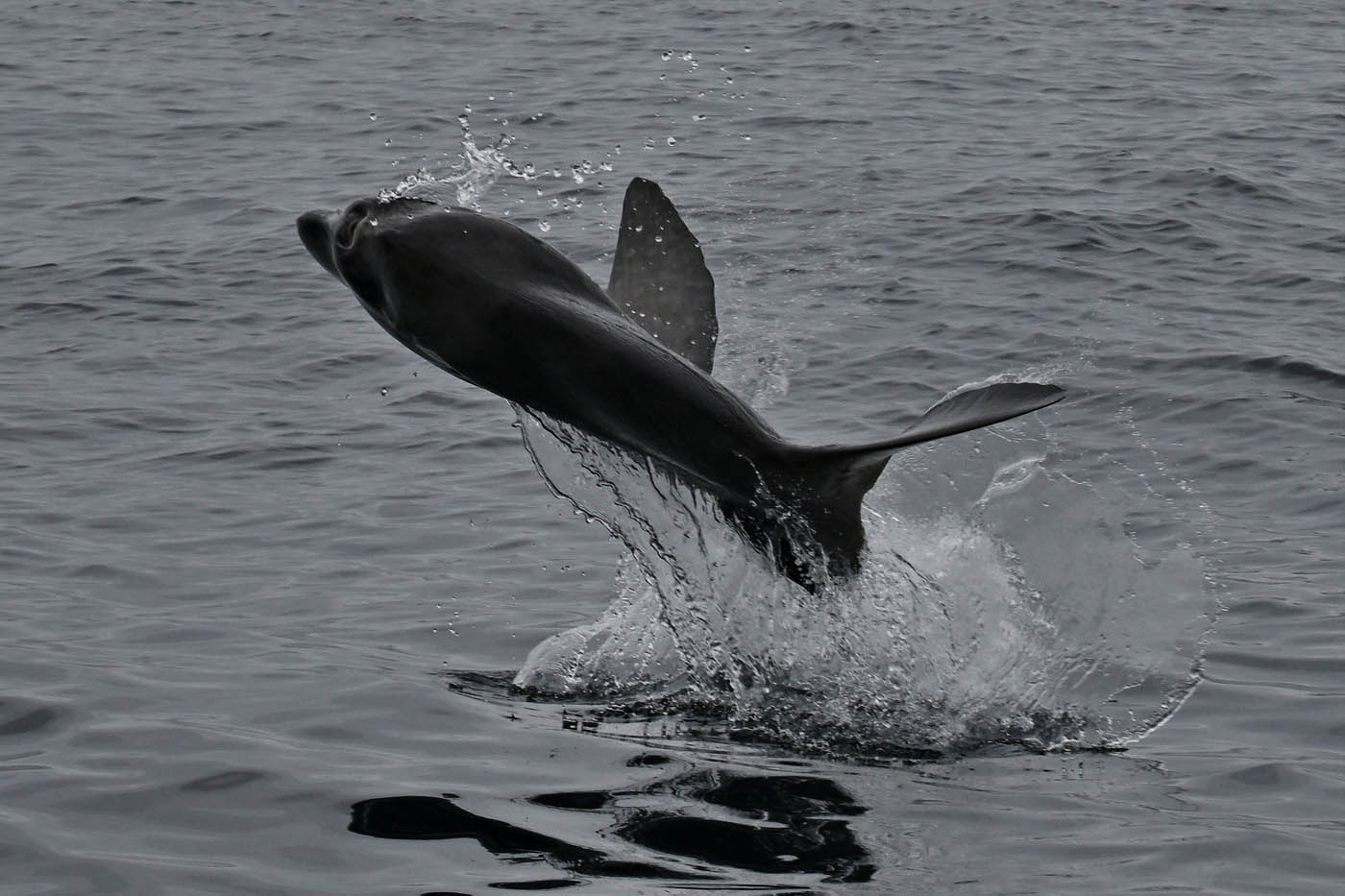A trip to show visitors around St Croix Island in Algoa Bay, Eastern Cape, turned into the sighting of a lifetime for skipper Jake Keeton when they saw an ocean sunfish weighing about 500kg breaching several times.
“I was on the second boat, but our crew in the other boat alerted us,” said Keeton, referring to Raggy Charters’ catamaran My Bru. “We were just cruising along and sometimes we will see sharks breach the water or a Bryde’s whale. So when we saw the fish, that is what I first thought.
“But when we got closer and it breached again we saw that it was a sunfish. It is very rare. I have never seen anything like it and I have been doing this since 2017.”
Keeton said he learnt later that scientists think that the breaching is a way for the sunfish to get rid of parasites on its skin, but nobody is really sure. According to the Two Oceans Aquarium, it could just be playing.
“This wasn’t a very big one – they can weigh up to a tonne,” said Keeton.
 The breaching sunfish near St Croix Island in Algoa Bay. (Photo: Lloyd Edwards of Raggy Charters)
The breaching sunfish near St Croix Island in Algoa Bay. (Photo: Lloyd Edwards of Raggy Charters)
The sunfish breached six times, providing them all with a good look at this rare creature. Not much is known about sunfish in South African waters, which is why the Two Oceans Aquarium has launched a citizens’ science project for the public to report where and when they see sunfish.
“We don’t see them often in Algoa Bay,” Keeton said, “but if the wind blows in a certain direction, then the water temperature rises and we would be lucky to spot them.”
Raggy Charters, owned by Lloyd Edwards, is also supporting the aquarium’s project to investigate the patterns of occurrence and distribution of ocean sunfish throughout South African waters.
As part of the project, South Africans are asked to share videos and pictures of sunfish when spotted to track reported sightings at various locations throughout the year.
“Ocean sunfish are a unique family of fish found all over the world. There are five species, all of which have been identified in South African waters. Until recently, very little has been known about these fish,” the aquarium said.
 This is how sunfish are normally spotted, floating close to the surface. (Photo: Lloyd Edwards of Raggy Charters)
This is how sunfish are normally spotted, floating close to the surface. (Photo: Lloyd Edwards of Raggy Charters)
How citizens can help conservation
The project, Searching for Sunfish, is a collaboration between the aquarium’s foundation and the University of Cape Town, where master’s degree student Kim Greenwood is gathering data on these fish.
“If you see an ocean sunfish, here’s what you can do to help. Snap a picture and video (from the side, if possible) with the date and time. Take note of what the sunfish was doing when you arrived. Share GPS coordinates for the sighting. Also report the environmental conditions (cloud cover, sea conditions, surface temperature, wind speed, etc),” the aquarium said.
Read more: Scientists arrive in Cape Town after deep-sea discoveries on ‘Around Africa Expedition’
“Supported by a core community of regular ocean users and the general public, this project creates awareness and interest in these fascinating animals.
 A sunfish close to the surface of the ocean. (Photo: Lloyd Edwards of Raggy Charters)
A sunfish close to the surface of the ocean. (Photo: Lloyd Edwards of Raggy Charters)
“Sunfish, known as the Molidae family, are a unique group of fish that have been poorly studied along the South African coastline despite their charisma and instant recognisability. Many gaps remain in our understanding of their population structure, diversity and biology – critical information for their effective conservation,” Two Oceans said.
In the past year, from 1 February 2024 to the same time this year, ocean enthusiasts around the world have reported 398 sightings of five species of sunfish on the iNaturalist website. By far the most – 328 – were of the common mola (Mola mola), followed by 38 sightings of the bumperhead mola (Mola alexandrini), 18 of the hoodwinker mola (Mola tecta), 11 of the sharptail mola (Masturus lanceolatus) and two of the slender mola (Ranzania laevis).
The hoodwinker mola was discovered in 2014 off the coast of New Zealand and was the first new species of sunfish identified in 130 years. DM
This story first appeared in our weekly Daily Maverick 168 newspaper, which is available countrywide for R35.





 This is how sunfish are normally spotted just floating close to the surface of the ocean. (Photo: Lloyd Edwards of Raggy Charters)
This is how sunfish are normally spotted just floating close to the surface of the ocean. (Photo: Lloyd Edwards of Raggy Charters) 